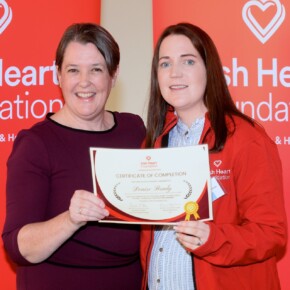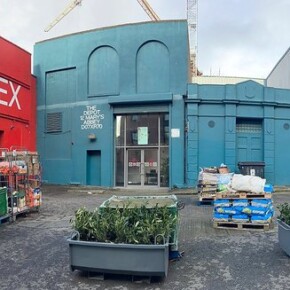Iconic Boiler House to be saved
Dublin People 10 May 2014BALLYMUN’S Boiler House has been saved from demolition thanks to a massive e3.6 million cash boost from Europe.
The iconic building was due to be torn down as part of the Ballymun Regeneration Project but it will now be transformed into a centre of
‘green’ learning thanks to a successful campaign led by local environmental group, The Rediscovery Centre.
Backed by Dublin City Council the centre applied for funding from the EU’s LIFE+ financial instrument for an ambitious project to revamp the building and use it to as a centre of excellence for sustainable development.
Rumours that the e3.6 million application had been approved were officially confirmed last week and work, facilitated by co-funding from the Department of the Environment, Community and Local Government, is expected to begin before the end of the year.
Confirmation of the funding was met with delight by Rediscovery Centre manager, Dr Sarah Miller.
“The reuse of the boiler house to create a centre of excellence is in keeping with the central ethos of the Rediscovery Centre which seeks to create value from waste resources,
? she said.
“The centre will provide an innovative platform for us to demonstrate the benefits of resource reuse and recovery and to deliver further education, training and skills development programmes.
?
The Ballymun boiler house with its distinctive red and white striped chimney was originally built in the 1960’s to provide water and heating to the 36 flat blocks and some associated public buildings in the area.
Decommissioned in 2010 it was due to be demolished as part of the local regeneration project. However, the Rediscovery Centre and Dublin City Council recognised the environmental, economic and social benefits the building could be put to in the new Ballymun.
“The activities of the proposed centre are core to ambitions set out in national waste and sustainability policies and will encourage eco-innovation, environmental best practice and the creation of green sector jobs,
? said Declan Wallace of Dublin City Council.
News of the funding was also welcomed by local councillor, Paul McAuliffe (FF), who described it as
“great news for both the Rediscovery Centre and Ballymun
?.
“It means one of the last remaining buildings of the 1960’s Ballymun estate is set to be ‘reused’ and recycled’ thanks to European funding,
? he said.
“The project will transform the abandoned Boiler House into a state-of-the-art environmentally efficient building that will be a fantastic resource to attract people from all over the city.
“The completed project will also enable The Rediscovery Centre to increase the numbers involved in its various employment training initiatives and will facilitate an increase in the number of schools and other groups attending educational programmes at the already accredited National Discover Science Centre.
?
Sinn Féin local election candidate, Noeleen Reilly, congratulated the Rediscovery Centre for its hard work in securing the funding.
“As a resident of Ballymun I look forward to see the exciting developments with the boiler house in the coming years,
? she added.
“With unemployment at unprecedented levels in the area, I would be calling on those involved in the project, where possible, to employ local people in this development, whether it be through construction jobs, administration or in other areas.
?
Built in the 1960’s the Boiler House provided heating and hot water to over 2,800 families. It was one of the largest heating systems in the British Isles when built.
The method of supplying water to the flats was also unusual in that it was pumped directly from a nearby central reservoir to the taps in the individual flats, replacing the need for large storage tanks on the roofs of the blocks.
On July 29, 2010, the Boiler House shut down for the last time and a new localised heating system came online to cater for the energy needs of the remaining flats.
As a famous local landmark the building has been the subject of many artistic projects over the years including Andrew Kearney’s memorable ‘Illumination of the Boiler House’ in 2002.
Kearney’s project ran for two years and heralded the beginning of ‘Breaking Grounds’ commissions, an innovative project that brought numerous art installations to Ballymun.
Early in 2010, the Boiler House site was put forward for an international competition – the European 10 architectural competition – to attract young talent to find an innovative architectural and urban solution for the site. Boiler-House Art Studios’ by Ross Lambe Architect (UK) won the award for the Ballymun site.











